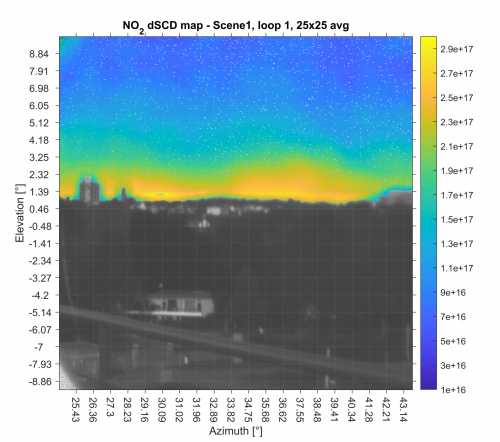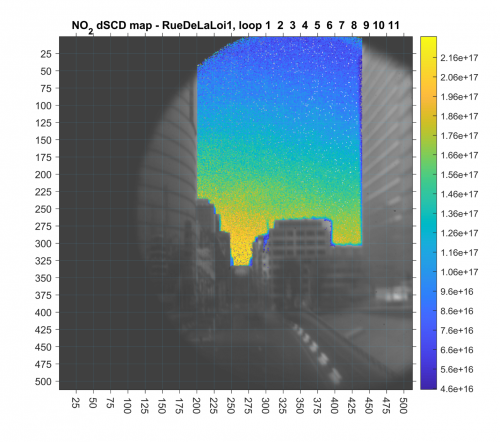From space to the surface of the Earth
The development of space experiments sometimes leads to unexpected side-applications.
In this particular case, it is the involvement of BIRA-IASB in the ALTIUS satellite mission which has led to the development of an innovative instrument for tackling a new challenge—at the surface of the Earth, this time: the emissions of NO2, a harmful species for human health, and a tracer of combustion processes.
Named the “NO2 camera”, this instrument combines remote sensing capabilities with imaging. It is capable of acquiring images of a scene (an industrial site, or an urban area), one wavelength at a time. By sweeping over a portion of interest of the sky’s light spectrum, a “hypercube” is built. Each pixel can be processed individually, such that the NO2 abundance can be determined in the line of sight of this pixel. At the level of the entire image, it is the field of NO2, which is captured.
Diffuse NO2 above the skyline
This new instrument has demonstrated its capabilities in imaging the NO2 plume released by power plant stacks (Dekemper et al. 2016). More recently, it has been used in an urban environment, focusing on the spatial and temporal patterns of the diffuse NO2 above the skyline. A validation campaign consisting in the comparison with a reference, but non-imaging instrument, has resulted in very consistent data.
These results are awaking interest in the air quality monitoring community. ESA, which is not only implementing space missions but also developing validation capabilities for its satellites, has selected the NO2 camera for a demonstration campaign in 2023. For several weeks, the instrument will be operated next to more conventional air quality monitoring devices in order to emphasize the added value of our spectral imager.
Reference
Dekemper, E., et al. (2016). The AOTF-based NO2 camera. Atmospheric Measurement Techniques, 9(12), 6025–6034. https://doi.org/10.5194/amt-9-6025-2016


